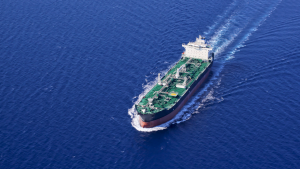
Navigating the complex maze of trends and statistics is key to uncovering profitable investment opportunities. But in all the confusion, three small-cap companies stick out like lights, each showing the way toward possible success. They provide unique yet attractive alternatives for portfolio growth and stability investors.
To begin with, the first company’s solid dividend policy and earnings performance demonstrate a dedication to maximizing value. Meanwhile, the second company’s steady dividend increases highlight steady cash flows and optimism about the future. Finally, the third, on the other hand, sets itself apart as a reliable investment choice with solid credit metrics and efficient risk management.
Moreover, these companies operate in various industries, including finance, real estate, and energy, offering exceptional growth prospects. There may be a comprehensive portfolio diversification strategy with these stocks. It is due to the first company’s operations in the storage and transportation of oil and gas, the second company’s concentration on industrial real estate investment trusts (REITs), and the third company’s proficiency in asset management and custody banking.
Overall, the prospects based on these small-cap stocks have been recognized as possible growth drivers and stable pillars in a volatile market.
Small-Cap Stocks with Growth Potential: Ardmore (ASC)

Ardmore’s (NYSE:ASC) dividend policy and earnings record demonstrate the company’s capacity to produce steady returns. Ardmore announced adjusted earnings of $38 million, or 92 cents per share, for Q1 2024. Looking forward, Ardmore continues to pay out one-third of adjusted earnings as part of its variable dividend policy. Even if it was somewhat less than the year before, this equates to a 31 cent cash dividend per share for $70 million in dividends paid out since the end of 2022 — roughly 10% of market value.
Additionally, for Q1, Ardmore’s MidRange (MR) Eco-Design tankers brought in an average spot Time Charter Equivalent (TCE) fee of $38.43K per day. Comparably, chemical tankers received an average TCE rate of $24.83K per day throughout the same period. Moreover, 60% of total revenue days are set aside for Q2 2024, and Ardmore expects average spot TCE prices to rise even higher. Projections suggest rates of about $40.5K per day for MR Eco-Design tankers and $32.5K per day for chemical tankers.
Overall, Ardmore’s vessels’ performance and charter prices show that the company can take advantage of favorable market circumstances and maximize income generation.
Newlake (NLCP)

Newlake’s (OTCMKTS:NLCP) continuous dividend increases demonstrate the company’s focus on deriving market value. In Q1 2024, the company raised its quarterly dividend to 41 cents per share, continuing a trend that began in the preceding quarter of 2023.
Further, Newlake’s capacity to raise dividends indicates its consistent cash flow creation. A strong portfolio and careful money management bolster this. Additionally, Newlake’s steady dividend increases demonstrate the company’s focus on its operations’ stability and growth prospects. With no debt and lots of cash on hand, Newlake is in a great financial position. Newlake is in a good position to take advantage of expansion prospects. Meanwhile, it may preserve financial flexibility because it only has $4 million in debt and over $85 million available under its existing credit facility.
Finally, the company’s credit facility has a competitive interest rate and is stable and flexible for future capital deployment because it doesn’t mature until 2027. Thus, Newlake can take advantage of opportunities to pursue strategic investments and high-quality deals due to its high liquidity and low leverage profile.
Blue Owl (OBDC)

With a weighted average EBITDA above $180 million and an average loan-to-value ratio of less than 45% (Q1 2024), Blue Owl’s (NYSE:OBDC) portfolio is solid. Moreover, the portfolio’s average interest coverage ratio is now 1.6 times. This demonstrates that the invested firms can service their debt even in a challenging economic climate.
Additionally, the portfolio shows no discernible stress despite rising interest rates. The coverage levels should also continue steadily, assuming secured overnight financing rate (SOFR) rates stay in the present range. This tenacity highlights how well Blue Owl’s underwriting guidelines and proactive portfolio management work. The company’s careful credit selection and proactive risk mitigation strategies are seen in the low nonaccrual rate of 1.8% of debt investments at fair value across five assets.
Lastly, With $2.4 billion in liquidity, Blue Owl had much more than unfilled commitments. This solid cash position reduces liquidity concerns and gives the business flexibility in deploying resources. Because of Blue Owl’s excellent credit quality, rating agencies have upgraded the company’s rating by Fitch and revised the outlook to positive for Moody’s.
On the date of publication, Yiannis Zourmpanos did not hold (either directly or indirectly) any positions in the securities mentioned in this article. The opinions expressed in this article are those of the writer, subject to the InvestorPlace.com Publishing Guidelines.





